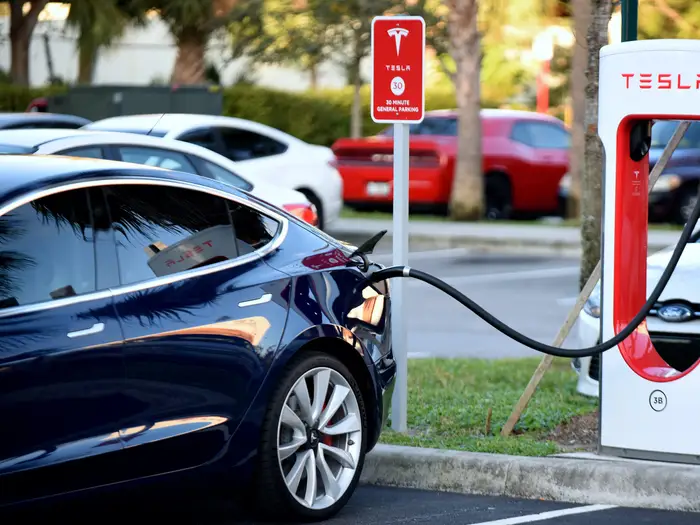In a world where sustainability is no longer just an option but a necessity, the electric vehicle (EV) industry stands at the forefront of innovation. As of late 2023, the spotlight has shifted toward a potential game-changer: sodium-ion batteries. According to a recent report from Bloomberg Green, these batteries could bring significant changes to the EV landscape as soon as 2024. But what makes sodium-ion technology a potential revolution in the EV industry? In this article, we’ll explore the current state of battery technology, delve into the advantages of sodium-ion batteries, and consider how they could reshape the future of electric vehicles.
Understanding Sodium-Ion Battery Technology
What Are Sodium-Ion Batteries?
Sodium-ion batteries, as the name suggests, use sodium ions to store and release energy, much like the lithium ions in traditional lithium-ion batteries. However, sodium is far more abundant and less expensive than lithium, making it an attractive alternative for large-scale energy storage.
- Abundant Resources: Sodium is one of the most abundant elements on Earth, significantly reducing the cost of raw materials.
- Environmental Impact: Unlike lithium, sodium extraction has a lower environmental footprint, aligning well with sustainable goals.
- Comparable Performance: Recent advances, reported by MIT Technology Review, suggest that sodium-ion batteries can achieve performance levels comparable to lithium-ion batteries, especially for EV applications.
Current Limitations and Research
The primary challenges facing sodium-ion batteries are energy density and lifecycle. However, research teams across the globe, including those from TechCrunch, are making significant strides in overcoming these hurdles through innovative materials and cell designs.
- Energy Density: While traditionally lower than lithium-ion, new cathode materials are improving this aspect.
- Lifecycle Improvements: Enhanced electrolytes are extending the battery lifespan, making them more viable for vehicles.
The Impact on the EV Industry
Cost-Effective Production
One of the most significant advantages of sodium-ion batteries is their potential to reduce the overall cost of EVs. With sodium being cheaper and more readily available than lithium, manufacturers could cut costs significantly, making EVs more accessible to the masses.
- Reduction in Battery Costs: Sodium-ion technology could reduce battery costs by up to 30%, according to InsideEVs.
- Lower Vehicle Prices: As a result, the price of electric vehicles could drop, broadening their appeal and accelerating adoption rates.
Enhanced Charging Infrastructure
The introduction of sodium-ion batteries could also lead to advancements in charging infrastructure.
- Faster Charging Times: Innovations are enabling sodium-ion batteries to charge faster than their lithium counterparts.
- Compatibility with Existing Infrastructure: These batteries can utilize current charging stations with minor modifications, easing the transition for consumers and service providers.
Environmentally Friendly Manufacturing
Sodium-ion batteries promise a more sustainable production process. As noted by CleanTechnica, the environmental impact of sodium extraction is minimal compared to lithium, making it a more eco-friendly option.
- Reduced Mining Impact: Sodium does not require the extensive mining processes associated with lithium, diminishing habitat disruption.
- Recyclability: These batteries offer easier recycling processes, which could enhance the sustainability of EVs even further.
Practical Considerations for Consumers
How to Charge Sodium-Ion Batteries
For consumers, the charging process for sodium-ion batteries will be familiar, though potentially more efficient. Here’s what you need to know:
- Use Existing Stations: Most current EV charging stations will support sodium-ion batteries with slight modifications.
- Monitor Charging Times: Expect faster charging periods, reducing wait times significantly.
- Plan for Updates: As infrastructure evolves, consumers should stay informed about new charging solutions tailored for sodium-ion batteries.
Where to Buy and What to Compare
As sodium-ion batteries enter the market, here’s what potential buyers should consider:
- Brand Availability: Keep an eye on manufacturers like BYD and Hyundai, who are at the forefront of adopting this technology.
- Performance Metrics: Compare energy density and lifecycle data with traditional lithium-ion options.
- Cost vs. Benefit: Evaluate the upfront cost savings against long-term performance benefits.
Conclusion: A Future Reimagined
2024 could be a pivotal year for the EV industry, with sodium-ion batteries poised to play a critical role in this transformation. Lower costs, enhanced sustainability, and improved performance are just a few of the benefits that could drive this change. As we look to the future, the widespread adoption of sodium-ion technology may not just revolutionize electric vehicles but also redefine our approach to sustainable living.
Are you excited about the potential of sodium-ion batteries? Share your thoughts in the comments below and join the conversation about the future of sustainable transportation. With innovations like this on the horizon, the journey toward a cleaner, greener world seems more promising than ever.
By focusing on the latest advancements and offering practical insights, sodium-ion batteries could indeed be the next big thing in the EV world. As we move forward, staying informed and engaged with these developments will be key to understanding their impact and potential in reshaping our transportation landscape.

